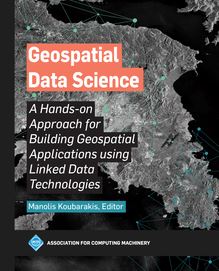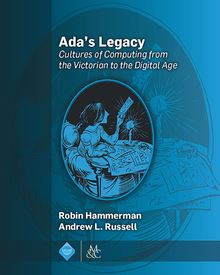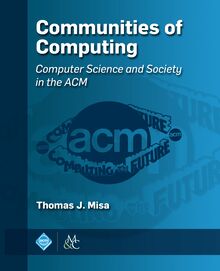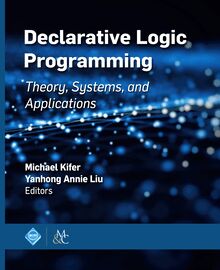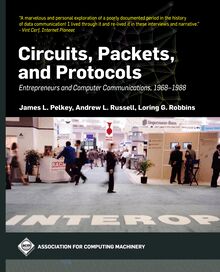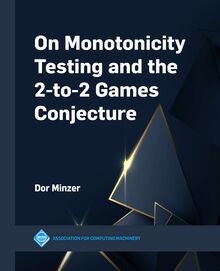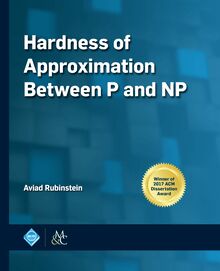-
 Univers
Univers
-
 Ebooks
Ebooks
-
 Livres audio
Livres audio
-
 Presse
Presse
-
 Podcasts
Podcasts
-
 BD
BD
-
 Documents
Documents
-
- Cours
- Révisions
- Ressources pédagogiques
- Sciences de l’éducation
- Manuels scolaires
- Langues
- Travaux de classe
- Annales de BEP
- Etudes supérieures
- Maternelle et primaire
- Fiches de lecture
- Orientation scolaire
- Méthodologie
- Corrigés de devoir
- Annales d’examens et concours
- Annales du bac
- Annales du brevet
- Rapports de stage
La lecture à portée de main
Vous pourrez modifier la taille du texte de cet ouvrage
Découvre YouScribe en t'inscrivant gratuitement
Je m'inscrisComputational Prediction of Protein Complexes from Protein Interaction Networks , livre ebook
Découvre YouScribe en t'inscrivant gratuitement
Je m'inscrisEn savoir plus
Vous pourrez modifier la taille du texte de cet ouvrage
En savoir plus

Description
Complexes of physically interacting proteins constitute fundamental functional units that drive almost all biological processes within cells. A faithful reconstruction of the entire set of protein complexes (the "complexosome") is therefore important not only to understand the composition of complexes but also the higher level functional organization within cells. Advances over the last several years, particularly through the use of high-throughput proteomics techniques, have made it possible to map substantial fractions of protein interactions (the "interactomes") from model organisms including Arabidopsis thaliana (a flowering plant), Caenorhabditis elegans (a nematode), Drosophila melanogaster (fruit fly), and Saccharomyces cerevisiae (budding yeast). These interaction datasets have enabled systematic inquiry into the identification and study of protein complexes from organisms. Computational methods have played a significant role in this context, by contributing accurate, efficient, and exhaustive ways to analyze the enormous amounts of data. These methods have helped to compensate for some of the limitations in experimental datasets including the presence of biological and technical noise and the relative paucity of credible interactions.
In this book, we systematically walk through computational methods devised to date (approximately between 2000 and 2016) for identifying protein complexes from the network of protein interactions (the protein-protein interaction (PPI) network). We present a detailed taxonomy of these methods, and comprehensively evaluate them for protein complex identification across a variety of scenarios including the absence of many true interactions and the presence of false-positive interactions (noise) in PPI networks. Based on this evaluation, we highlight challenges faced by the methods, for instance in identifying sparse, sub-, or small complexes and in discerning overlapping complexes, and reveal how a combination of strategies is necessary to accurately reconstruct the entire complexosome.
Table of Contents: Preface / 1. Introduction to Protein Complex Prediction / 2. Constructing Reliable Protein-Protein Interaction (PPI) Networks / 3. Computational Methods for Protein Complex Prediction from PPI Networks / 4. Evaluating Protein Complex Prediction Methods / 5. Open Challenges in Protein Complex Prediction / 6. Identifying Dynamic Protein Complexes / 7. Identifying Evolutionarily Conserved Protein Complexes / 8. Protein Complex Prediction in the Era of Systems Biology / 9. Conclusion / References / Authors' Biographies
Sujets
Informations
| Publié par | Association for Computing Machinery and Morgan & Claypool Publishers |
| Date de parution | 30 mai 2017 |
| Nombre de lectures | 0 |
| EAN13 | 9781970001549 |
| Langue | English |
| Poids de l'ouvrage | 9 Mo |
Informations légales : prix de location à la page 0,3198€. Cette information est donnée uniquement à titre indicatif conformément à la législation en vigueur.
Extrait
Computational Prediction of Protein Complexes from Protein Interaction Networks
ACM Books
Editor in Chief
M. Tamer zsu, University of Waterloo
ACM Books is a new series of high-quality books for the computer science community, published by ACM in collaboration with Morgan Claypool Publishers. ACM Books publications are widely distributed in both print and digital formats through booksellers and to libraries (and library consortia) and individual ACM members via the ACM Digital Library platform.
Computational Prediction of Protein Complexes from Protein Interaction Networks
Sriganesh Srihari, The University of Queensland Institute for Molecular Bioscience
Chern Han Yong, Duke-National University of Singapore Medical School
Limsoon Wong, National University of Singapore
2017
Shared-Memory Parallelism Can Be Simple, Fast, and Scalable
Julian Shun, University of California, Berkeley
2017
The Handbook of Multimodal-Multisensor Interfaces, Volume 1: Foundations, User Modeling, and Common Modality Combinations
Editors: Sharon Oviatt, Incaa Designs
Bj rn Schuller, University of Passau and Imperial College London
Philip R. Cohen, Voicebox Technologies
Daniel Sonntag, German Research Center for Artificial Intelligence (DFKI)
Gerasimos Potamianos, University of Thessaly
Antonio Kr ger, German Research Center for Artificial Intelligence (DFKI)
2017
Communities of Computing: Computer Science and Society in the ACM
Thomas J. Misa, Editor, University of Minnesota
2017
Text Data Management and Analysis: A Practical Introduction to Information Retrieval and Text Mining
ChengXiang Zhai, University of Illinois at Urbana-Champaign
Sean Massung, University of Illinois at Urbana-Champaign
2016
An Architecture for Fast and General Data Processing on Large Clusters
Matei Zaharia, Massachusetts Institute of Technology
2016
Reactive Internet Programming: State Chart XML in Action
Franck Barbier, University of Pau, France
2016
Verified Functional Programming in Agda
Aaron Stump, The University of Iowa
2016
The VR Book: Human-Centered Design for Virtual Reality
Jason Jerald, NextGen Interactions
2016
Ada s Legacy: Cultures of Computing from the Victorian to the Digital Age
Robin Hammerman, Stevens Institute of Technology
Andrew L. Russell, Stevens Institute of Technology
2016
Edmund Berkeley and the Social Responsibility of Computer Professionals
Bernadette Longo, New Jersey Institute of Technology
2015
Candidate Multilinear Maps
Sanjam Garg, University of California, Berkeley
2015
Smarter Than Their Machines: Oral Histories of Pioneers in Interactive Computing
John Cullinane, Northeastern University; Mossavar-Rahmani Center for Business and Government, John F. Kennedy School of Government, Harvard University
2015
A Framework for Scientific Discovery through Video Games
Seth Cooper, University of Washington
2014
Trust Extension as a Mechanism for Secure Code Execution on Commodity Computers
Bryan Jeffrey Parno, Microsoft Research
2014
Embracing Interference in Wireless Systems
Shyamnath Gollakota, University of Washington
2014
Computational Prediction of Protein Complexes from Protein Interaction Networks
Sriganesh Srihari
The University of Queensland Institute for Molecular Bioscience
Chern Han Yong
Duke-National University of Singapore Medical School
Limsoon Wong
National University of Singapore
ACM Books #16
Copyright 2017 by the Association for Computing Machinery and Morgan Claypool Publishers
All rights reserved. No part of this publication may be reproduced, stored in a retrieval system, or transmitted in any form or by any means-electronic, mechanical, photocopy, recording, or any other except for brief quotations in printed reviews-without the prior permission of the publisher.
Designations used by companies to distinguish their products are often claimed as trademarks or registered trademarks. In all instances in which Morgan Claypool is aware of a claim, the product names appear in initial capital or all capital letters. Readers, however, should contact the appropriate companies for more complete information regarding trademarks and registration.
Computational Prediction of Protein Complexes from Protein Interaction Networks
Sriganesh Srihari, Chern Han Yong, Limsoon Wong
books.acm.org
www.morganclaypoolpublishers.com
ISBN: 978-1-97000-155-6 hardcover
ISBN: 978-1-97000-152-5 paperback
ISBN: 978-1-97000-153-2 ebook
ISBN: 978-1-97000-154-9 ePub
Series ISSN: 2374-6769 print 2374-6777 electronic
DOIs:
10.1145/3064650 Book
10.1145/3064650.3064651 Preface
10.1145/3064650.3064652 Chapter 1
10.1145/3064650.3064653 Chapter 2
10.1145/3064650.3064654 Chapter 3
10.1145/3064650.3064655 Chapter 4
10.1145/3064650.3064656 Chapter 5
10.1145/3064650.3064657 Chapter 6
10.1145/3064650.3064658 Chapter 7
10.1145/3064650.3064659 Chapter 8
10.1145/3064650.3064660 Chapter 9
10.1145/3064650.3064661 References , Bios
A publication in the ACM Books series, #16
Editor in Chief: M. Tamer zsu, University of Waterloo
First Edition
10 9 8 7 6 5 4 3 2 1
Dedicated to the Honors, Masters, and Ph.D. students who worked over the years on the different aspects of PPI networks by being part of the computational biology group at the Department of Computer Science, National University of Singapore .
Contents
Preface
Chapter 1
Introduction to Protein Complex Prediction
1.1 From Protein Interactions to Protein Complexes
1.2 Databases for Protein Complexes
1.3 Organization of the Rest of the Book
Chapter 2
Constructing Reliable Protein-Protein Interaction (PPI) Networks
2.1 High-Throughput Experimental Systems to Infer PPIs
2.2 Data Sources for PPIs
2.3 Topological Properties of PPI Networks
2.4 Theoretical Models for PPI Networks
2.5 Visualizing PPI Networks
2.6 Building High-Confidence PPI Networks
2.7 Enhancing PPI Networks by Integrating Functional Interactions
Chapter 3
Computational Methods for Protein Complex Prediction from PPI Networks
3.1 Basic Definitions and Terminologies
3.2 Taxonomy of Methods for Protein Complex Prediction
3.3 Methods Based Solely on PPI Network Clustering
3.4 Methods Incorporating Core-Attachment Structure
3.5 Methods Incorporating Functional Information
Chapter 4
Evaluating Protein Complex Prediction Methods
4.1 Evaluation Criteria and Methodology
4.2 Evaluation on Unweighted Yeast PPI Networks
4.3 Evaluation on Weighted Yeast PPI Networks
4.4 Evaluation on Human PPI Networks
4.5 Case Study: Prediction of the Human Mechanistic Target of Rapamycin Complex
4.6 Take-Home Lessons from Evaluating Prediction Methods
Chapter 5
Open Challenges in Protein Complex Prediction
5.1 Three Main Challenges in Protein Complex Prediction
5.2 Identifying Sparse Protein Complexes
5.3 Identifying Overlapping Protein Complexes
5.4 Identifying Small Protein Complexes
5.5 Identifying Protein Sub-complexes
5.6 An Integrated System for Identifying Challenging Protein Complexes
5.7 Recent Methods for Protein Complex Prediction
5.8 Identifying Membrane-Protein Complexes
Chapter 6
Identifying Dynamic Protein Complexes
6.1 Dynamism of Protein Interactions and Protein Complexes
6.2 Identifying Temporal Protein Complexes
6.3 Intrinsic Disorder in Proteins
6.4 Intrinsic Disorder in Protein Interactions and Protein Complexes
6.5 Identifying Fuzzy Protein Complexes
Chapter 7
Identifying Evolutionarily Conserved Protein Complexes
7.1 Inferring Evolutionarily Conserved PPIs (Interologs)
7.2 Identifying Conserved Complexes from Interolog Networks, I
7.3 Identifying Conserved Complexes from Interolog Networks, II
Chapter 8
Protein Complex Prediction in the Era of Systems Biology
8.1 Constructing the Network of Protein Complexes
8.2 Identifying Protein Complexes Across Phenotypes
8.3 Identifying Protein Complexes in Diseases
8.4 Enhancing Quantitative Proteomics Using PPI Networks and Protein Complexes
8.5 Systems Biology Tools and Databases to Analyze Biomolecular Networks
Chapter 9
Conclusion
References
Authors Biographies
Preface
The suggestion and motivation to write this book came from Limsoon, who thought that it would be a great idea to compile our (Sriganesh s and Chern Han s) Ph.D. research conducted at National University of Singapore on protein complex prediction from protein-protein interaction (PPI) networks into a comprehensive book for the research community. Since we (Sriganesh and Chern Han) completed our Ph.D.s not long ago, the timing could not have been better for writing this book while the topic is still fresh in our minds and the empirical set up (datasets and software pipelines) for evaluating the methods is still in a quick-to-run form. However, although we had our Ph.D. theses to our convenient disposal and reference, it is only after we started writing this book that we realized the real scale of the task that we had embarked upon.
The problem of protein complex prediction may be just one of the plethora of computational problems that have opened up since the deluge of proteomics (protein-protein interaction; PPI) data over the last several years. However, in reality this problem encompasses or directly relates to several important and open problems in the area-in particular, the fundamental problems of modeling, visualizing, and denoising of PPI networks, prediction of PPIs (novel as well as evolutionarily conserved), and protein function prediction from PPI data. Therefore, to write a comprehensive self-contained book, we had to cover even these closely related problems to some extent or at least allude to or reference them in the book. We had to do so without missing the connection between these problems and our central problem of protein complex prediction in the book.
The early tone to write the book in this manner was set by our review article in a 2015 special issue of FEBS Letters , where we covered a number of
-
 Univers
Univers
-
 Ebooks
Ebooks
-
 Livres audio
Livres audio
-
 Presse
Presse
-
 Podcasts
Podcasts
-
 BD
BD
-
 Documents
Documents
-
Jeunesse
-
Littérature
-
Ressources professionnelles
-
Santé et bien-être
-
Savoirs
-
Education
-
Loisirs et hobbies
-
Art, musique et cinéma
-
Actualité et débat de société
-
Jeunesse
-
Littérature
-
Ressources professionnelles
-
Santé et bien-être
-
Savoirs
-
Education
-
Loisirs et hobbies
-
Art, musique et cinéma
-
Actualité et débat de société
-
Actualités
-
Lifestyle
-
Presse jeunesse
-
Presse professionnelle
-
Pratique
-
Presse sportive
-
Presse internationale
-
Culture & Médias
-
Action et Aventures
-
Science-fiction et Fantasy
-
Société
-
Jeunesse
-
Littérature
-
Ressources professionnelles
-
Santé et bien-être
-
Savoirs
-
Education
-
Loisirs et hobbies
-
Art, musique et cinéma
-
Actualité et débat de société
- Cours
- Révisions
- Ressources pédagogiques
- Sciences de l’éducation
- Manuels scolaires
- Langues
- Travaux de classe
- Annales de BEP
- Etudes supérieures
- Maternelle et primaire
- Fiches de lecture
- Orientation scolaire
- Méthodologie
- Corrigés de devoir
- Annales d’examens et concours
- Annales du bac
- Annales du brevet
- Rapports de stage
